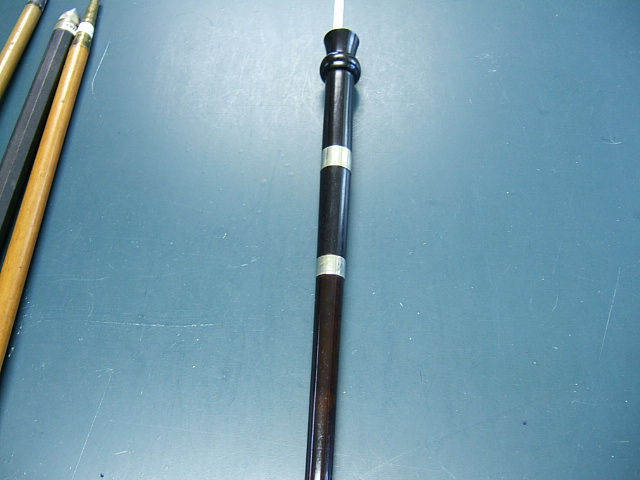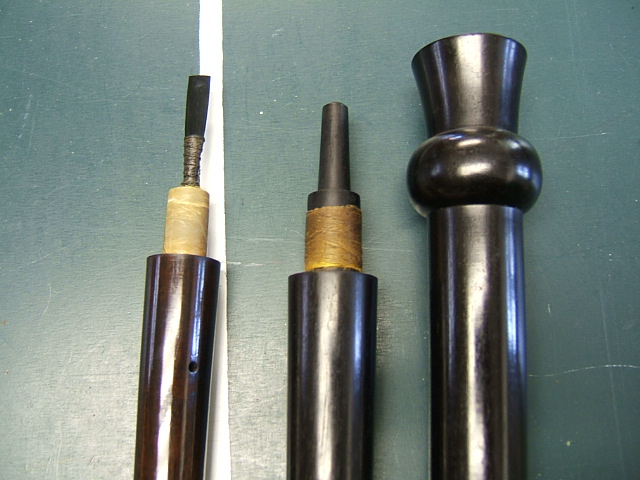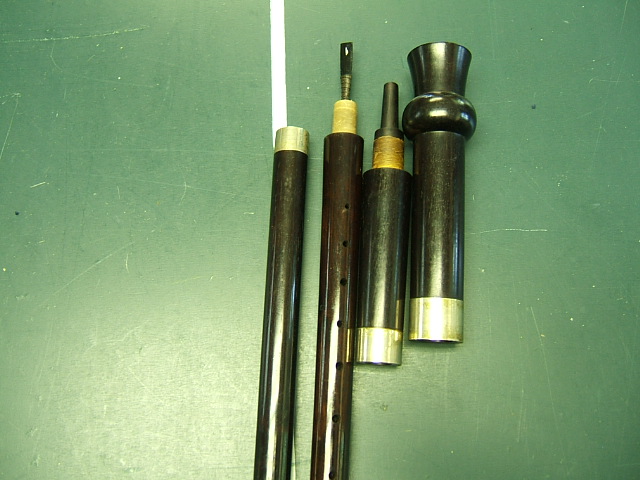 Chanter (8231) Chanter (8231)
The chanter is the part of the bagpipe that plays the tune. This is in Dike, but a different model with variations. When I read about it in Dike I really didnít understand how it worked, as this is the first one I have ever actually seen. The most interesting thing she did say is that bagpipe makers were required to make a cane as part of their training. These were used to practice on without the bagpipes. You blow thru the hole at the opposite end of the reed; and play the holes with your fingers. I like the symbolic Scottish thistle on the handle. Hereís a lesson in dating canes by style of the times. Between 1700 and 1840 most canes were simple. Most handles were curved and graceful. Victorian is 1841 to 1900 the rein of Queen Victoria. Canes made during this period are ornate. i.e. the age of the presentation cane.
Between 1890 and 1910 there was a rebellion toward the excesses of the Victorian period, led by Tiffany jewelers and simple styles be came king to these people. Do you see where Iím going, this cane was made during this period of simplicity. . If it had been made during the Victorian period the thistle would have been carved. During the same period of time there was a movement in Paris promoting the Art Noveau.style. This very ornate style is characterized by curvy flowing lines and graceful women. My favorite style in jewelry, furniture and, canes.is art noveau. Between 1901 and 1910
we have Edwardian, a very delicate style. The tapered straight enameled handles with delicate engine turning and delicate designs come to my mind as good examples.. You see a very strong shift in the look of canes between l900 and 1929.. The trim on enameled canes were white metal for the first time,as white gold and platinum was not in used before that date.. I believe another reason for the downfall of canes, which I have never seen in print, was the depression. The beautiful jewelry with good quality gemstones, and canes with good materials, was all but gone after 1929,because nobody had money.. The jewelry styles became lighter, plainer, and had mostly square synthetic gemstones, just as canes and umbrellas were made from bakelite, lusite, and other forms of cheaper materials. Most are surprised to learn, the beautiful presentation canes and umbrellas were made until the depression. Mission oak in America was popular in 1910. Square canes and square cane holders were made for a short time.. The first Art Modern exhibition was held in Paris in 1926 and Art Deco was born. The best quality art deco was made before 1929 and the cheapest after. The bright spot after 1929 is art deco bakelite, not because it was so expensive then, but because itís so collectable today. Itís also not reproducible today, as the formula no longer exist. I just decided to do a book on bakelite.
Category: Gadget
Sub Category: Occupational - Tools
Listed: 2006-07-03 00:20:54
|










 Online Video
Online Video








